Abstract
Ground beef contains numerous microorganisms of various types. The commonly recognized bacteria are associated with current problems of spoilage. Irradiation, however, contributes a new factor through selective destruction of the microflora. The residual microorganisms surviving a nonsterilizing dose are predominantly gram-negative coccobacilli. Various classifications have been given, e.g., Moraxella, Acinetobacter, Achromobacter, etc. For a more detailed study of these radiation-resistant bacteria occurring in ground beef, an enrichment procedure was used for isolation. By means of morphological and biochemical tests, most of the isolates were found to be Moraxella, based on current classifications. The range of growth temperatures was from 2 to 50 C. These bacteria were relatively heat sensitive, e.g., D10 of 5.4 min at 70 C or less. The radiation resistance ranged from D10 values of 273 to 2,039 krad. Thus, some were more resistant than any presently recognized spores. A reference culture of Moraxella osloensis was irradiated under conditions comparable to the enrichment procedure used with the ground beef. The only apparent changes were in morphology and penicillin sensitivity. However, after a few subcultures these bacteria reverted to the characteristics of the parent strain. Thus, it is apparent that these isolates are a part of the normal flora of ground beef and not aberrant forms arising from the irradiation procedure. The significance, if any, of these bacteria is not presently recognized.
Full text
PDF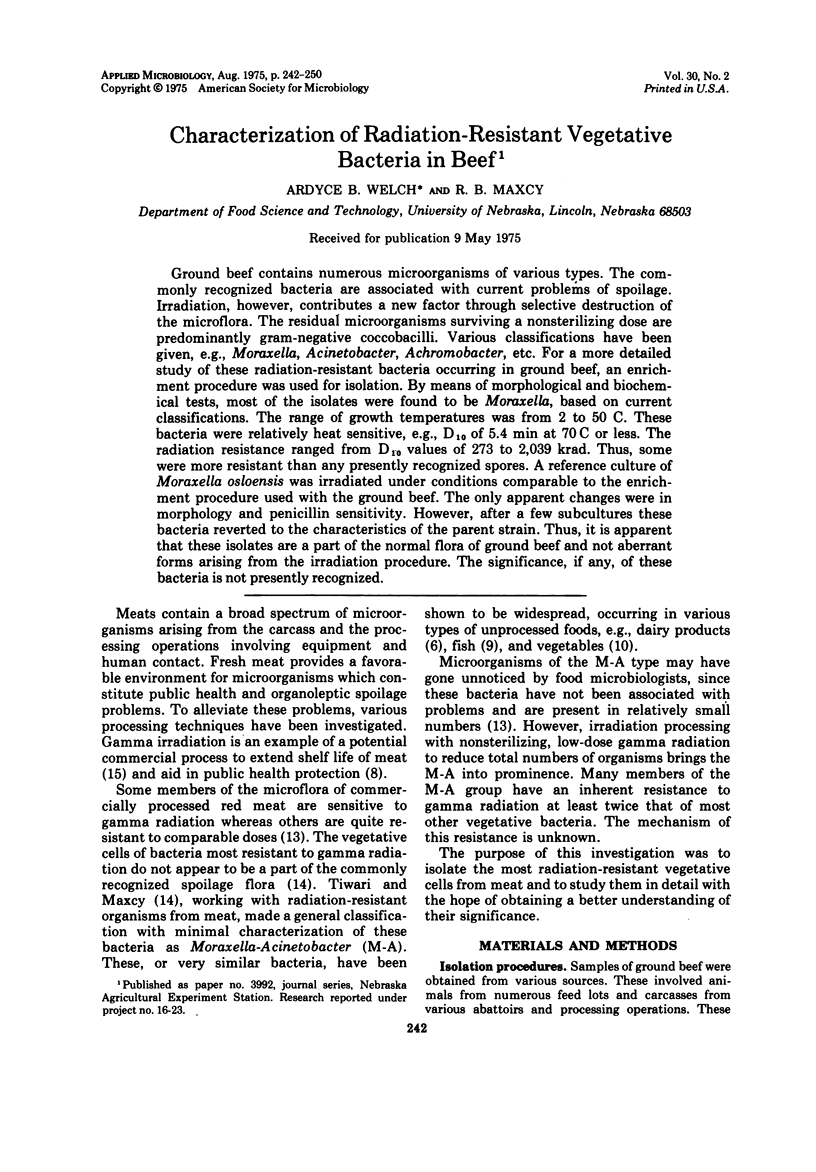
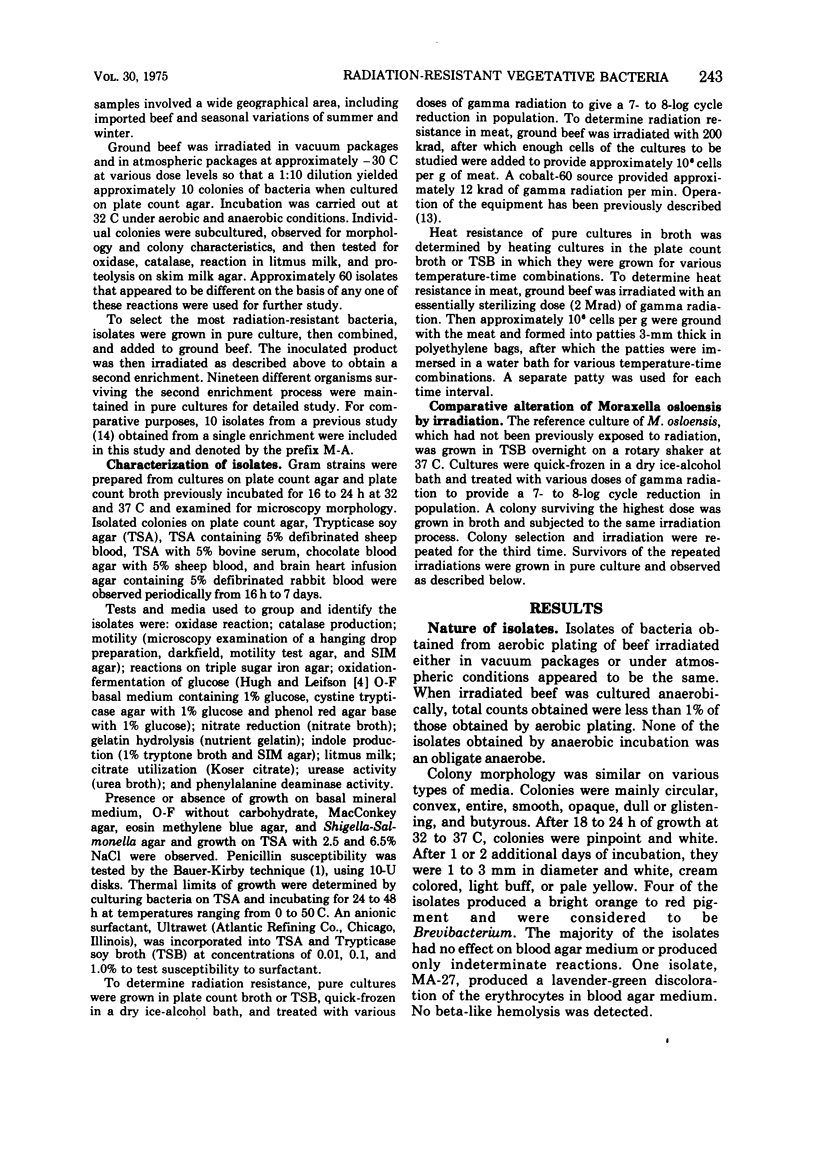
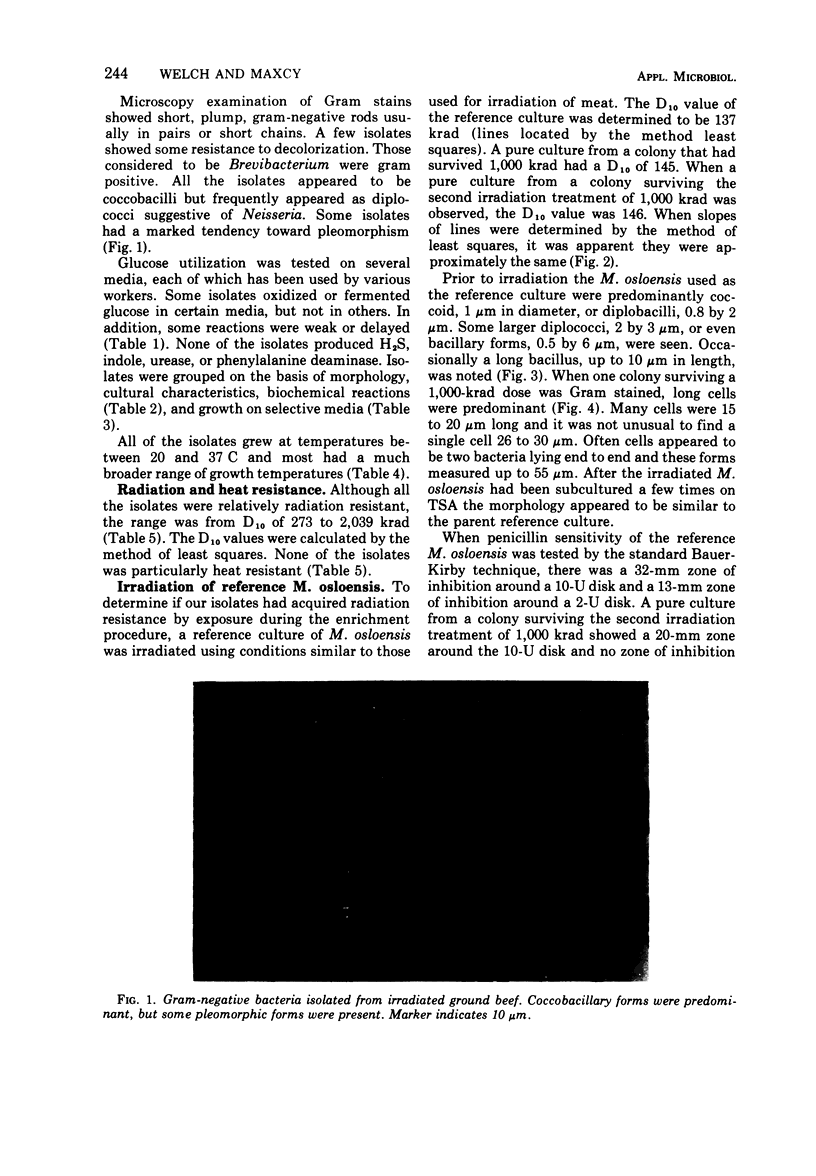
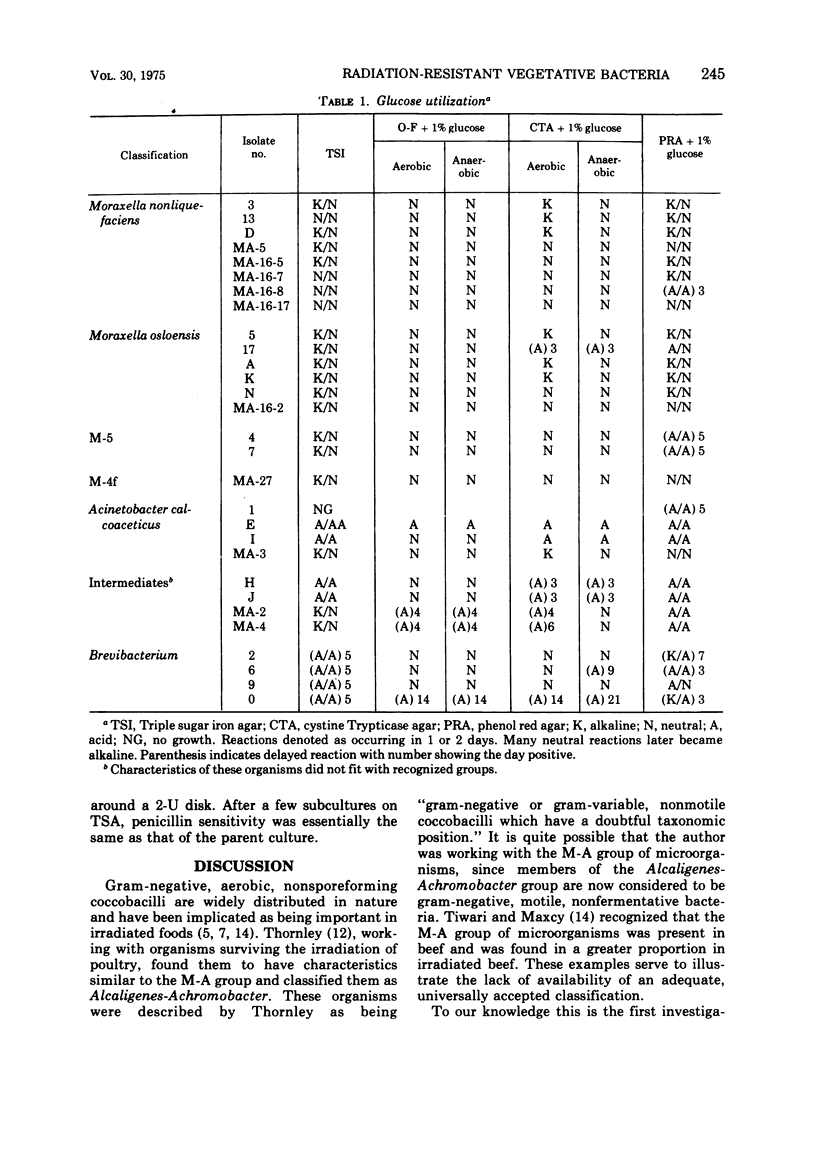
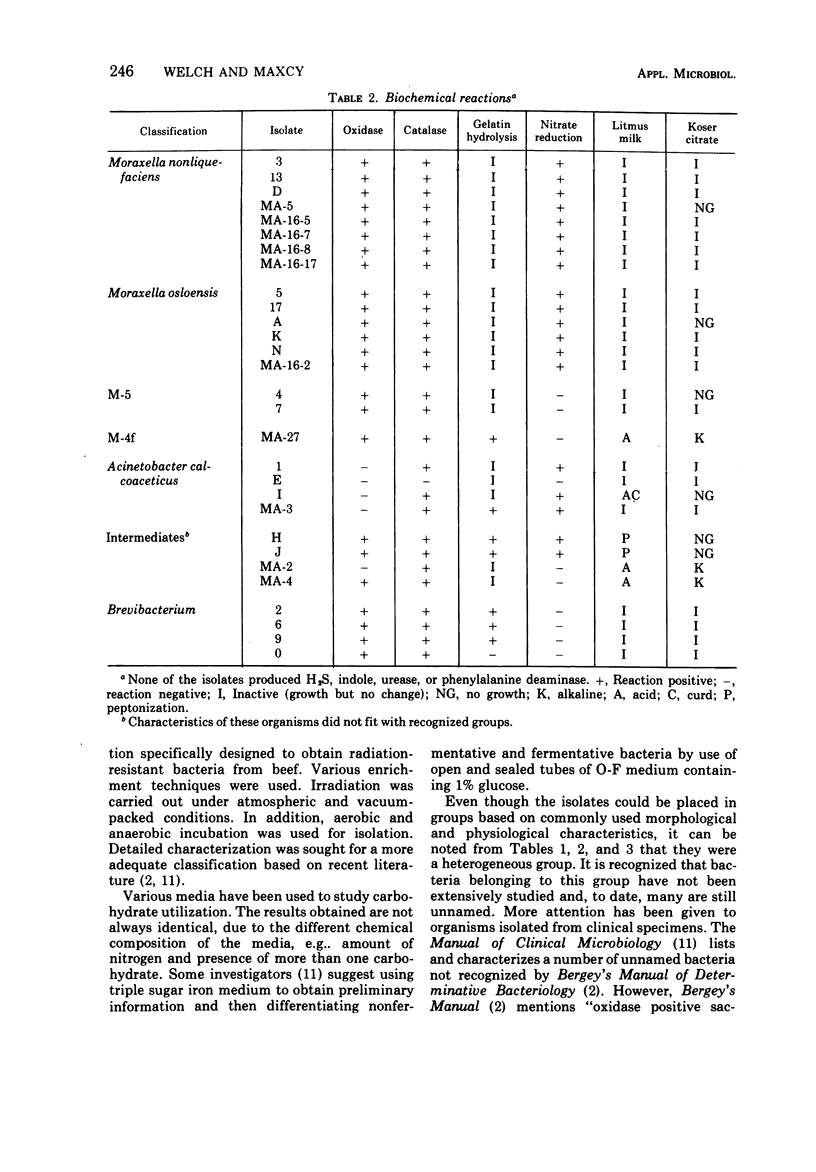
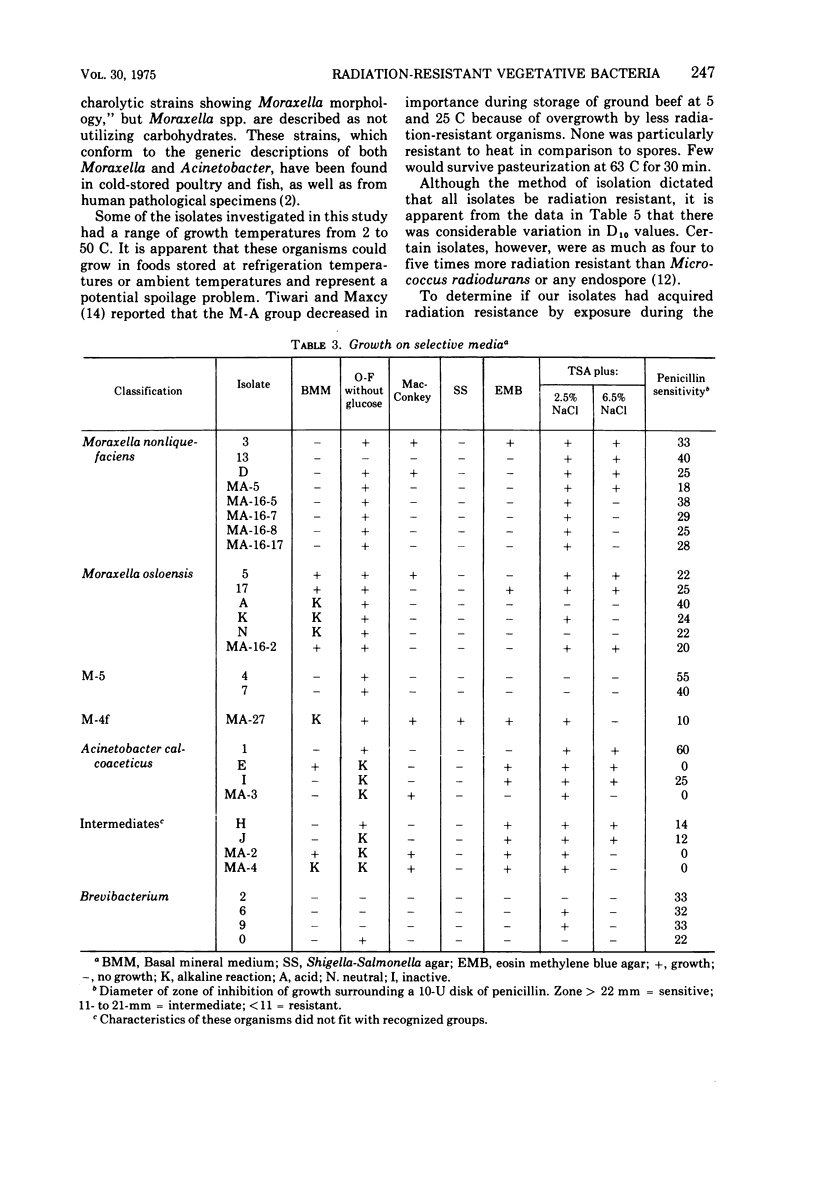
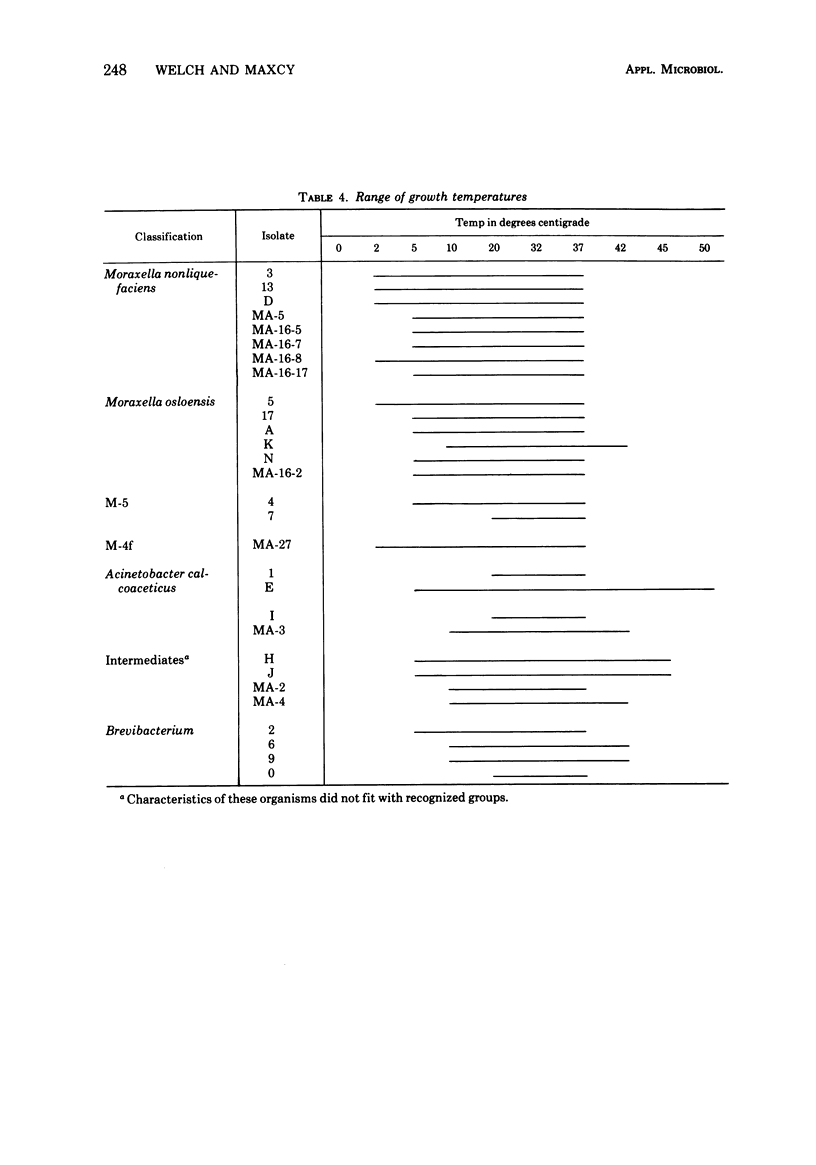
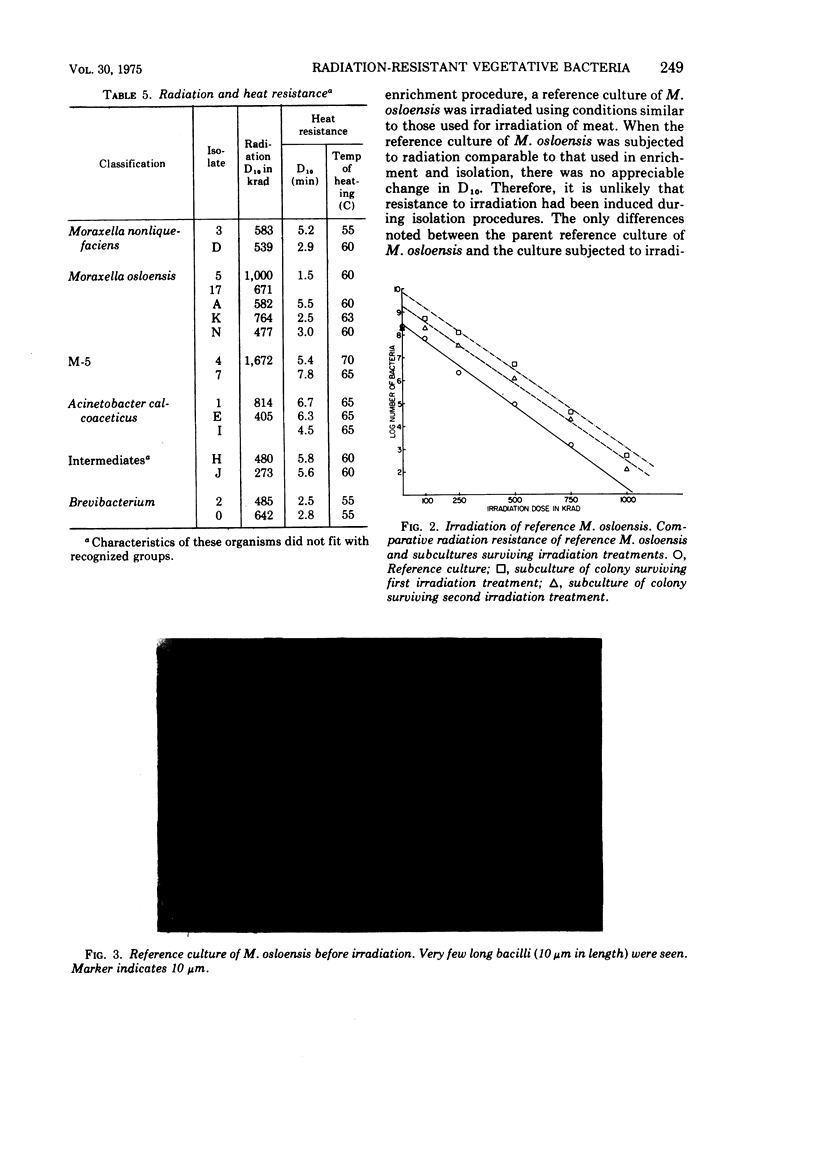
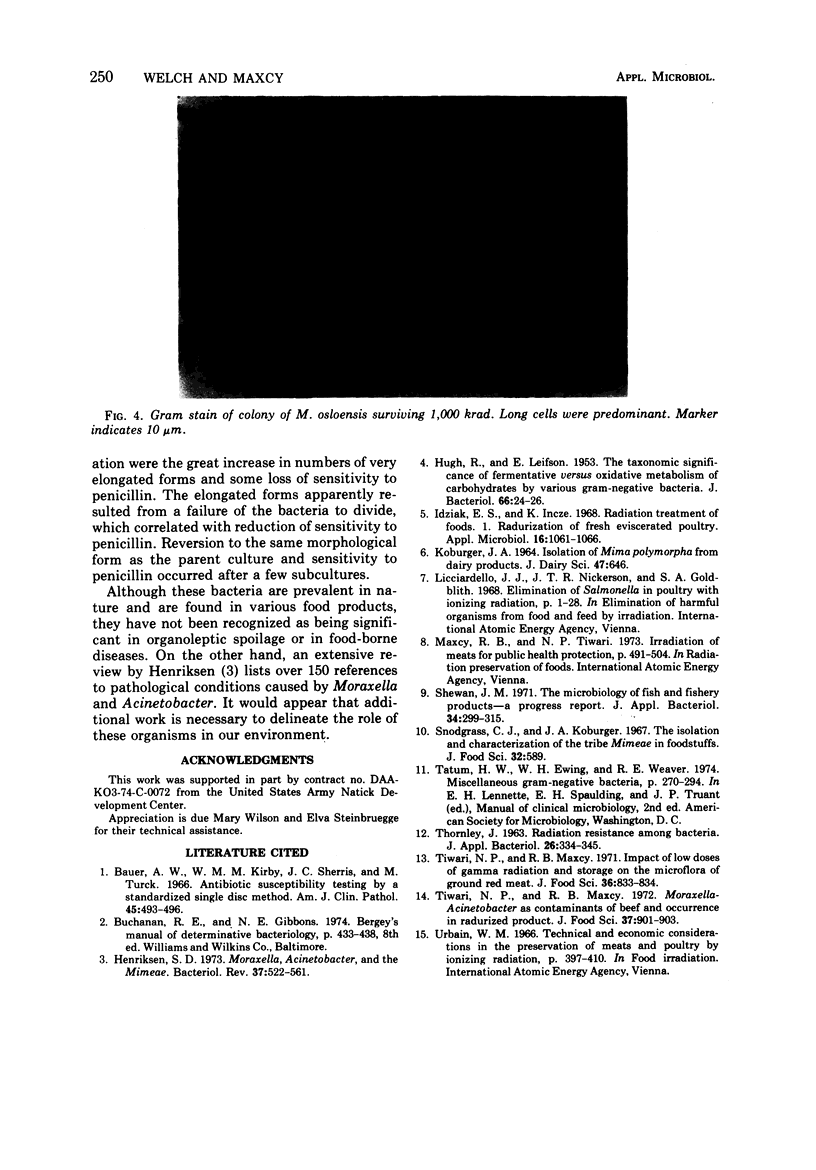
Images in this article
Selected References
These references are in PubMed. This may not be the complete list of references from this article.
- Bauer A. W., Kirby W. M., Sherris J. C., Turck M. Antibiotic susceptibility testing by a standardized single disk method. Am J Clin Pathol. 1966 Apr;45(4):493–496. [PubMed] [Google Scholar]
- HUGH R., LEIFSON E. The taxonomic significance of fermentative versus oxidative metabolism of carbohydrates by various gram negative bacteria. J Bacteriol. 1953 Jul;66(1):24–26. doi: 10.1128/jb.66.1.24-26.1953. [DOI] [PMC free article] [PubMed] [Google Scholar]
- Henriksen S. D. Moraxella, Acinetobacter, and the Mimeae. Bacteriol Rev. 1973 Dec;37(4):522–561. doi: 10.1128/br.37.4.522-561.1973. [DOI] [PMC free article] [PubMed] [Google Scholar]
- Idziak E. S., Incze K. Radiation treatment of foods. I. Radurization of fresh eviscerated poultry. Appl Microbiol. 1968 Jul;16(7):1061–1066. doi: 10.1128/am.16.7.1061-1066.1968. [DOI] [PMC free article] [PubMed] [Google Scholar]
- Shewan J. M. The microbiology of fish and fishery products--a progress report. J Appl Bacteriol. 1971 Jun;34(2):299–315. doi: 10.1111/j.1365-2672.1971.tb02291.x. [DOI] [PubMed] [Google Scholar]





